Your desk isn’t just where you work—it’s where you create, solve problems, and spend a significant portion of your day. In today’s hybrid work environment where 74% of American professionals split time between home and office spaces, creating an inspiring workspace has never been more important. The right desk decor can boost your focus, reduce stress, and make even mundane tasks feel more enjoyable.
As an interior designer specializing in home offices, I’ve seen how thoughtful desk styling transforms not just physical spaces but mental states. According to research cited by slouchonline.com, a personalized workspace can increase productivity by up to 17%. Your desk should reflect your personality while supporting your work style—whether you’re a creative professional needing inspiration or a data analyst requiring minimal distractions.
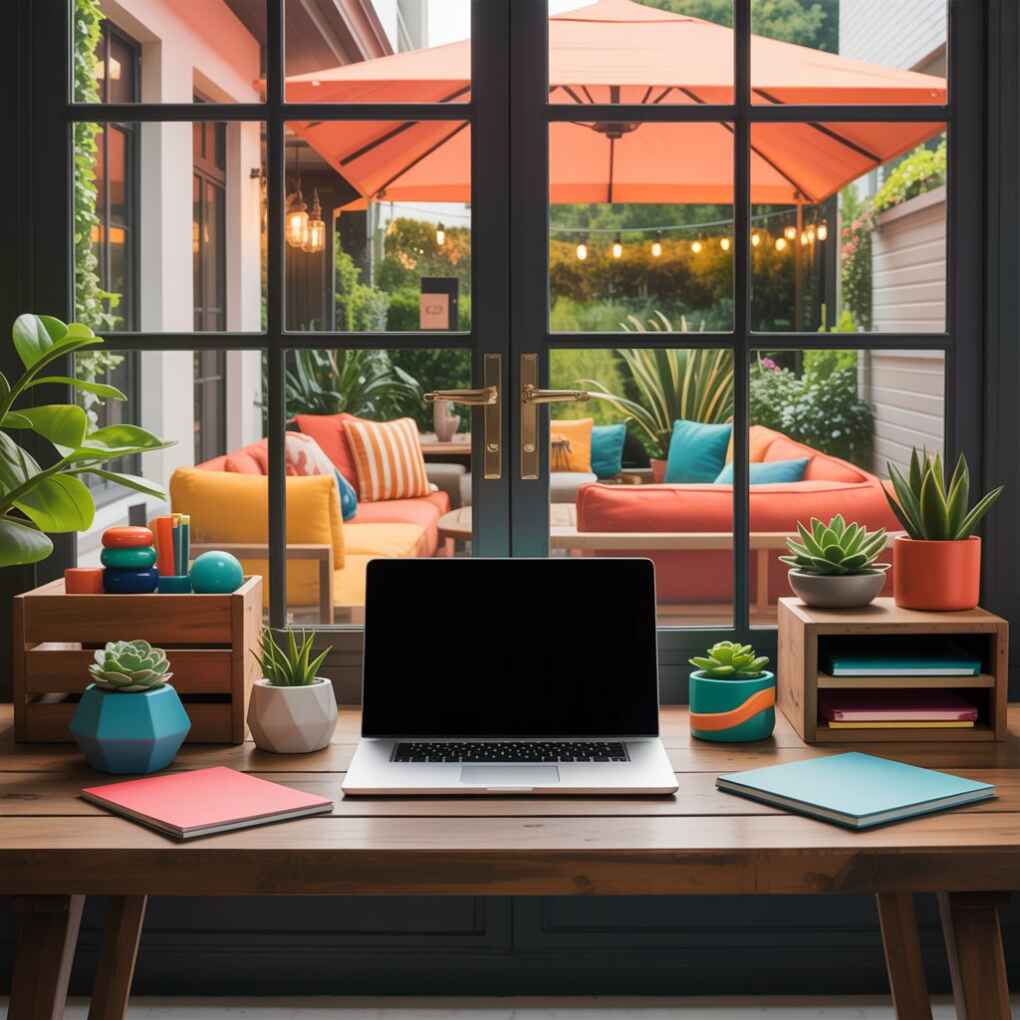
This comprehensive guide presents 15 desk decor ideas that balance aesthetics with functionality, drawing from professional design principles and real-world applications. Each idea has been carefully selected to work in various space constraints, from compact apartment desks to executive offices. Let’s transform your workspace into a place where productivity and pleasure coexist.
1. The Minimalist Monochrome Setup
- Choose one neutral color palette (white, gray, or black)
- Limit desk accessories to 3-5 essential items
- Use hidden storage to maintain clean lines
- Add subtle texture through materials rather than color
A minimalist desk eliminates visual clutter that can drain your cognitive resources. Studies show that visual clutter competes for your attention, reducing your ability to focus and process information efficiently. By embracing a monochrome scheme, you create a calm visual field that allows your mind to concentrate on work rather than surroundings.

The minimalist approach doesn’t mean boring—it means intentional. Select high-quality materials like wood, metal, or stone in your chosen neutral tone to add sophistication without distraction. As thespruce.com suggests, “Less is more when it comes to creating a workspace that promotes mental clarity.” This setup works particularly well in small spaces where visual simplicity makes the area feel larger and more open.
2. The Green Office Sanctuary
- Incorporate 3-5 living plants (succulents, snake plants, or pothos)
- Use plant stands at varying heights for visual interest
- Add a small water feature for calming background sounds
- Choose planters that complement your desk’s color scheme
Biophilic design—bringing nature indoors—has measurable benefits for workplace well-being. Research shows that having plants in your workspace can reduce stress by 37%, lower blood pressure, and increase creativity by up to 15%. The Green Office Sanctuary leverages these benefits while creating a visually appealing workspace that feels alive and energizing.
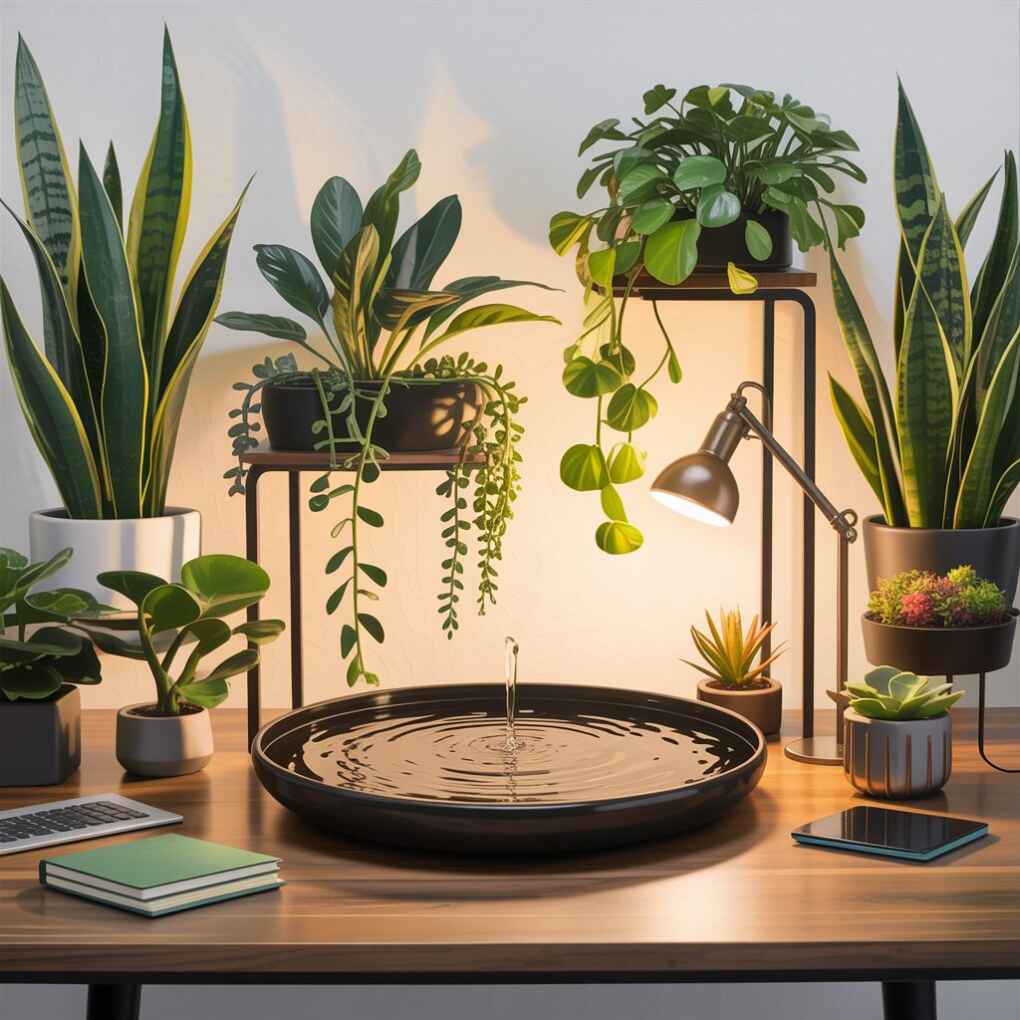
When selecting plants, prioritize low-maintenance varieties that thrive in indoor lighting conditions. The localfurnitureoutlet.com recommends snake plants for their air-purifying qualities and ability to thrive in low light. Position taller plants in the back corners of your desk to create depth without blocking your view, and use trailing plants like pothos to add vertical interest.
3. The Creative Command Center
- Designate specific zones for different work types
- Use a large whiteboard or corkboard for brainstorming
- Keep art supplies within easy reach in labeled containers
- Incorporate mood boards with inspirational imagery
For creative professionals, your desk should function as both a workspace and an inspiration hub. The Creative Command Center organizes your tools and resources in a way that supports the creative process from ideation to execution. By having everything you need within arm’s reach, you eliminate the friction that often interrupts creative flow.
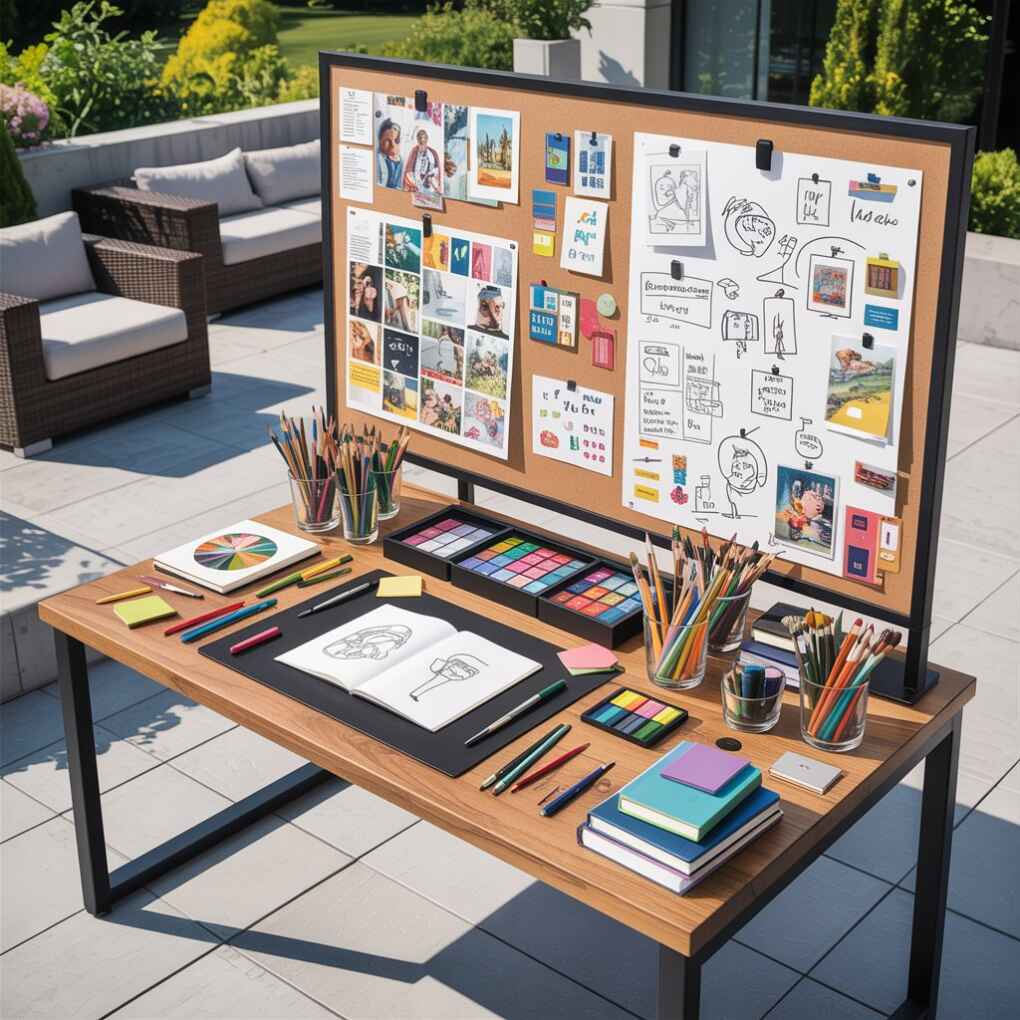
This setup works particularly well for designers, writers, and artists who need to toggle between different modes of work. According to erincondren.com, “A well-organized creative space can reduce the time spent searching for tools by up to 30 minutes per day.” Use color-coded containers to organize supplies and keep your most-used items in the “golden triangle” (the area between your monitor, keyboard, and dominant hand).
4. The Vintage Office Revival
- Incorporate antique desk accessories (typewriters, inkwells)
- Use brass or copper accents for warmth
- Add a vintage-inspired desk lamp
- Display framed historical documents or maps
The Vintage Office Revival brings a sense of history and craftsmanship to your workspace. This aesthetic appeals to those who appreciate the tactile quality of traditional office tools and find modern digital interfaces somewhat sterile. The nostalgia factor can actually boost creativity by connecting you to different eras of innovation.
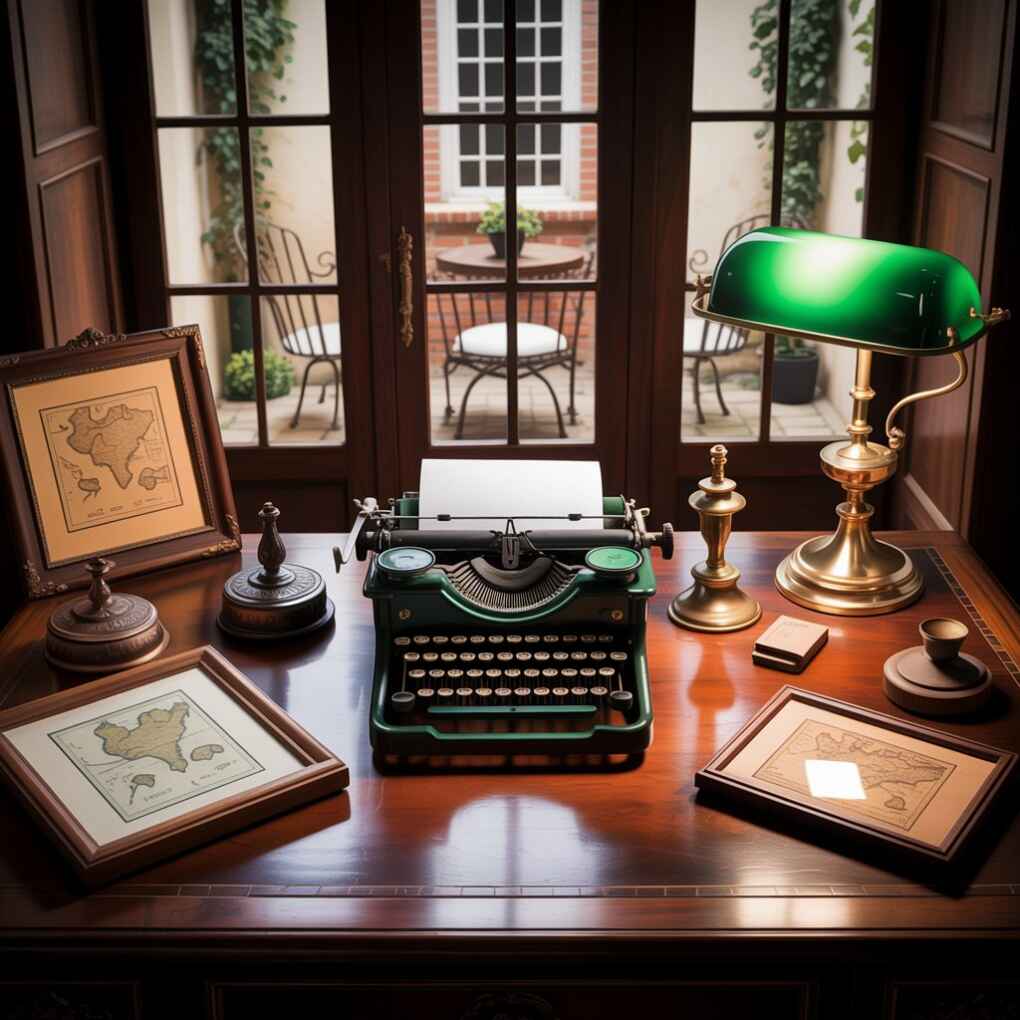
When creating a vintage-inspired space, focus on quality over quantity. A single well-chosen antique piece can serve as the focal point of your desk. As noted by creativebooster.net, “Vintage elements add character and story to a workspace, making it feel uniquely yours rather than a generic office.” Avoid going overboard—integrate vintage pieces with modern essentials for a balanced look that’s functional and charming.
5. The Tech-Forward Workspace
- Use cable management systems to hide wires
- Incorporate smart lighting that adjusts to time of day
- Add a multi-monitor setup with a clean mount
- Include wireless charging stations
For tech professionals and digital workers, the Tech-Forward Workspace prioritizes seamless integration of technology without the visual chaos of cables and devices. This setup recognizes that technology is central to modern work while ensuring it enhances rather than dominates your space.
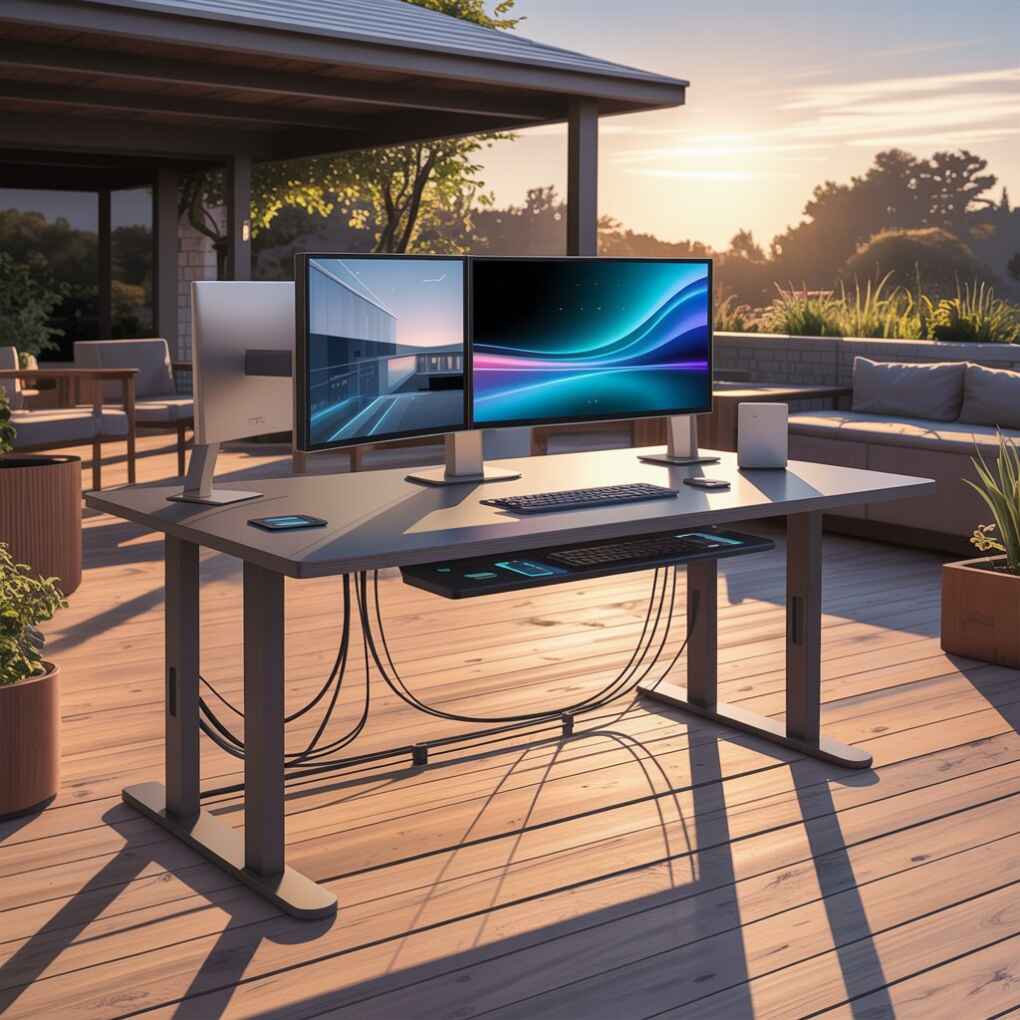
Effective cable management is the cornerstone of this aesthetic. Use under-desk trays, adhesive clips, and cord covers to keep wires organized and out of sight. Consider investing in a monitor arm that both saves desk space and provides ergonomic benefits. As slouchonline.com points out, “A clean tech setup reduces visual stress and creates a more professional appearance during video calls.”
6. The Color-Blocked Power Desk
- Divide desk into color zones using accessories
- Choose 2-3 complementary colors that energize you
- Use colored file folders and notebooks consistently
- Add a bold area rug under the desk for foundation
Color psychology plays a significant role in how we feel and perform at work. The Color-Blocked Power Desk uses intentional color placement to create visual organization and emotional impact. Blue promotes focus, yellow stimulates creativity, and green reduces anxiety—choose colors that support your specific work needs.
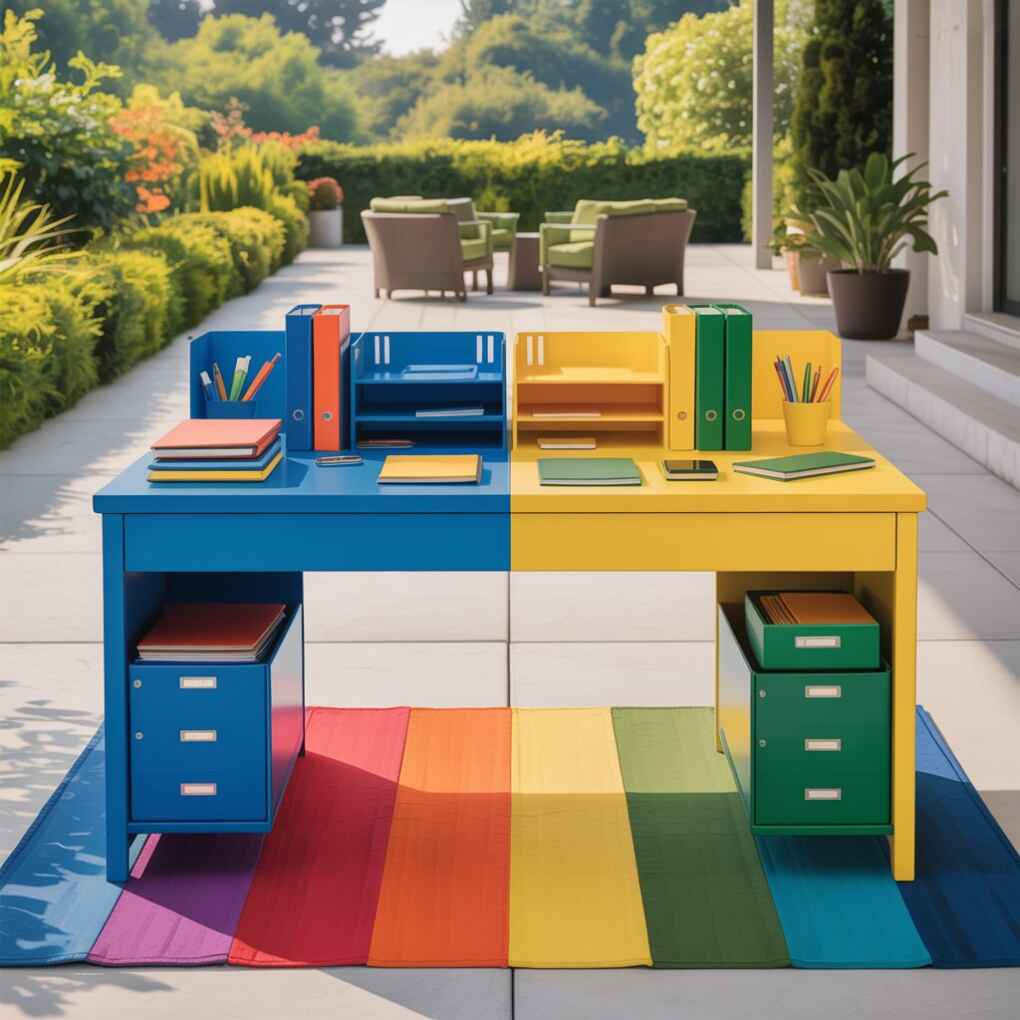
This approach works particularly well in open office environments where personalization is limited. By creating color zones, you establish visual boundaries that help separate different types of work mentally. According to thespruce.com, “Color blocking creates a sense of order that can help reduce decision fatigue throughout the workday.” Keep the color scheme consistent but not overwhelming—use 60% neutral, 30% main color, and 10% accent color.
7. The Cozy Cottage Core Desk
- Add soft textures like knit desk pads and fabric organizers
- Use warm, natural wood tones
- Incorporate vintage-inspired stationery
- Include a small table lamp with a fabric shade
The Cozy Cottage Core Desk creates a welcoming, homey atmosphere that counteracts the sterile feel of corporate environments. This aesthetic embraces comfort and warmth, making your workspace feel like an extension of your living space rather than a separate, clinical area.

This trend has gained popularity as more people work from home and seek to blend their professional and personal spaces harmoniously. Natural materials like wood, linen, and ceramics create visual warmth that electronic devices lack. As localfurnitureoutlet.com explains, “Soft textures in the workspace can reduce stress and make long work hours feel more comfortable.” The key is balancing coziness with professionalism—your desk should feel inviting without looking messy.
8. The Modern Industrial Workspace
- Use exposed metal and concrete elements
- Incorporate raw wood with visible grain
- Add adjustable task lighting with metal finishes
- Display tools as decor (vintage rulers, compasses)
The Modern Industrial Workspace draws inspiration from converted lofts and urban factories, emphasizing raw materials and functional design. This aesthetic appeals to those who appreciate the beauty in practicality and enjoy a more rugged, masculine design approach.
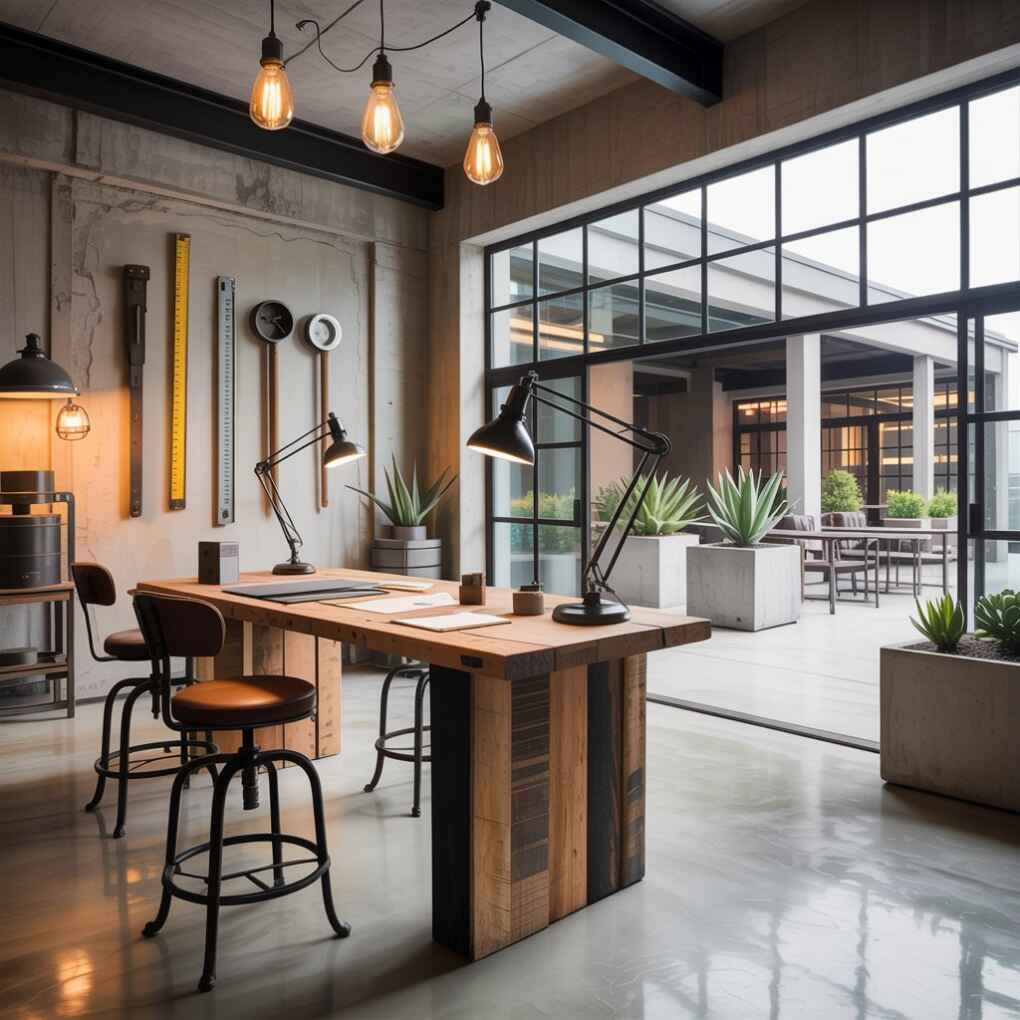
Industrial design doesn’t mean cold or uninviting—it means honest materials that age gracefully. Combine metal and wood elements for visual interest and warmth. As creativebooster.net notes, “Industrial elements add character and durability to workspaces, creating a professional yet approachable environment.” For a softer touch, incorporate leather accessories or wool textiles to balance the harder materials.
9. The Artistic Display Desk
- Feature rotating art pieces on a small easel
- Use a desk with built-in display shelves
- Incorporate sculptural desk accessories
- Add framed prints that reflect your personal style
The Artistic Display Desk treats your workspace as a gallery for your personal aesthetic. This approach works particularly well for creative professionals whose work requires visual inspiration, but anyone can benefit from surrounding themselves with art that resonates with them.
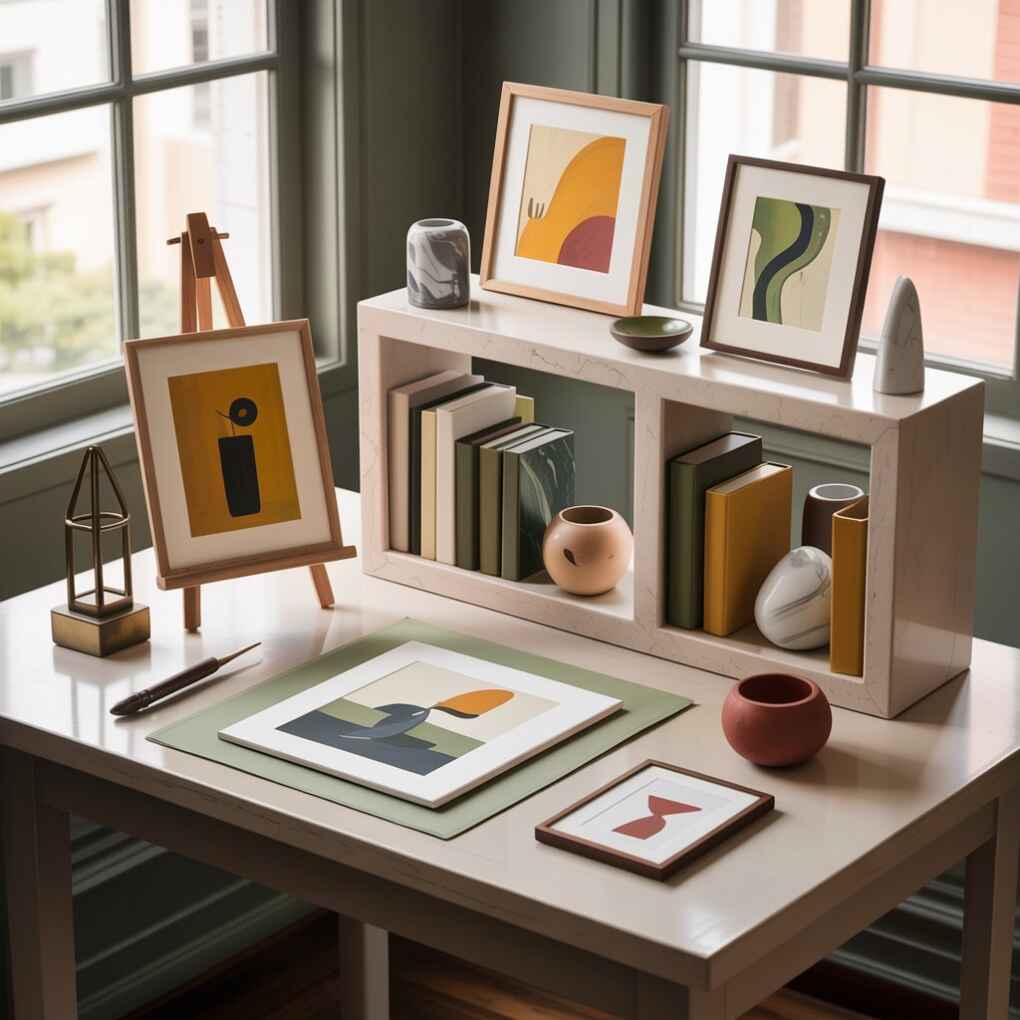
Art in the workplace has been shown to reduce stress and increase creative problem-solving abilities. Choose pieces that inspire you but don’t overwhelm your visual field—remember, your work should still be the focus. As erincondren.com suggests, “Art in the workspace should be like a good conversation—engaging but not distracting.” Rotate pieces periodically to keep your space feeling fresh and inspiring.
10. The Organized Executive Desk
- Use a large, high-quality desk as the centerpiece
- Incorporate built-in drawers and hidden storage
- Add a leather desk blotter and matching accessories
- Position a statement chair for video calls
The Organized Executive Desk projects authority while maintaining impeccable organization. This aesthetic works well for leadership roles where the desk serves as both a workspace and a meeting place, projecting professionalism and competence.
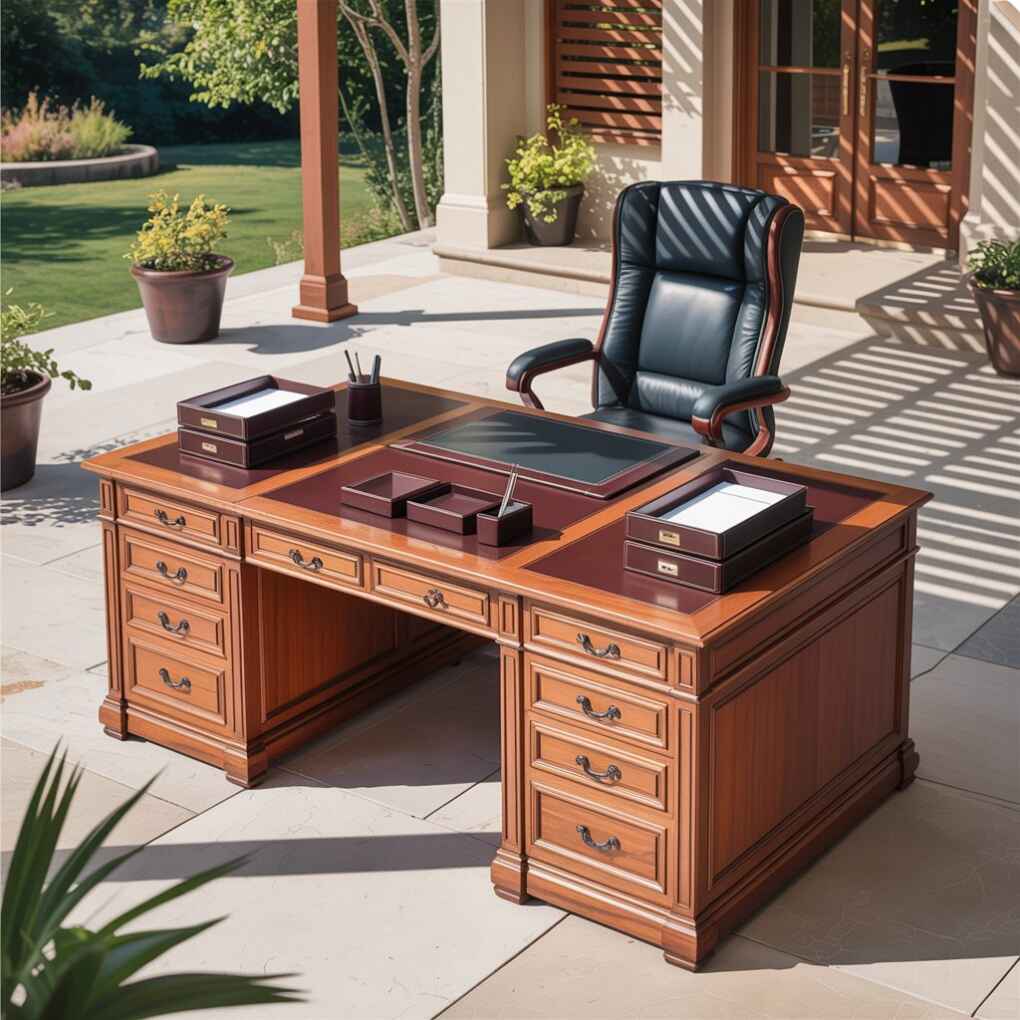
Executive desks often benefit from the “clear desk, clear mind” philosophy while still appearing substantial and authoritative. According to slouchonline.com, “A well-organized executive desk can improve decision-making by reducing visual noise and creating a sense of control.” Use a desk organizer with compartments to keep essentials accessible but out of sight when not in use.
11. The Student Study Sanctuary
- Use vertical space for storage with wall-mounted organizers
- Add a motivational quote or vision board
- Keep a dedicated notebook for each subject
- Include a small plant for stress relief
The Student Study Sanctuary addresses the unique needs of students who often work in limited spaces with multiple competing demands. This setup prioritizes organization and focus while creating a space that feels separate from living areas.
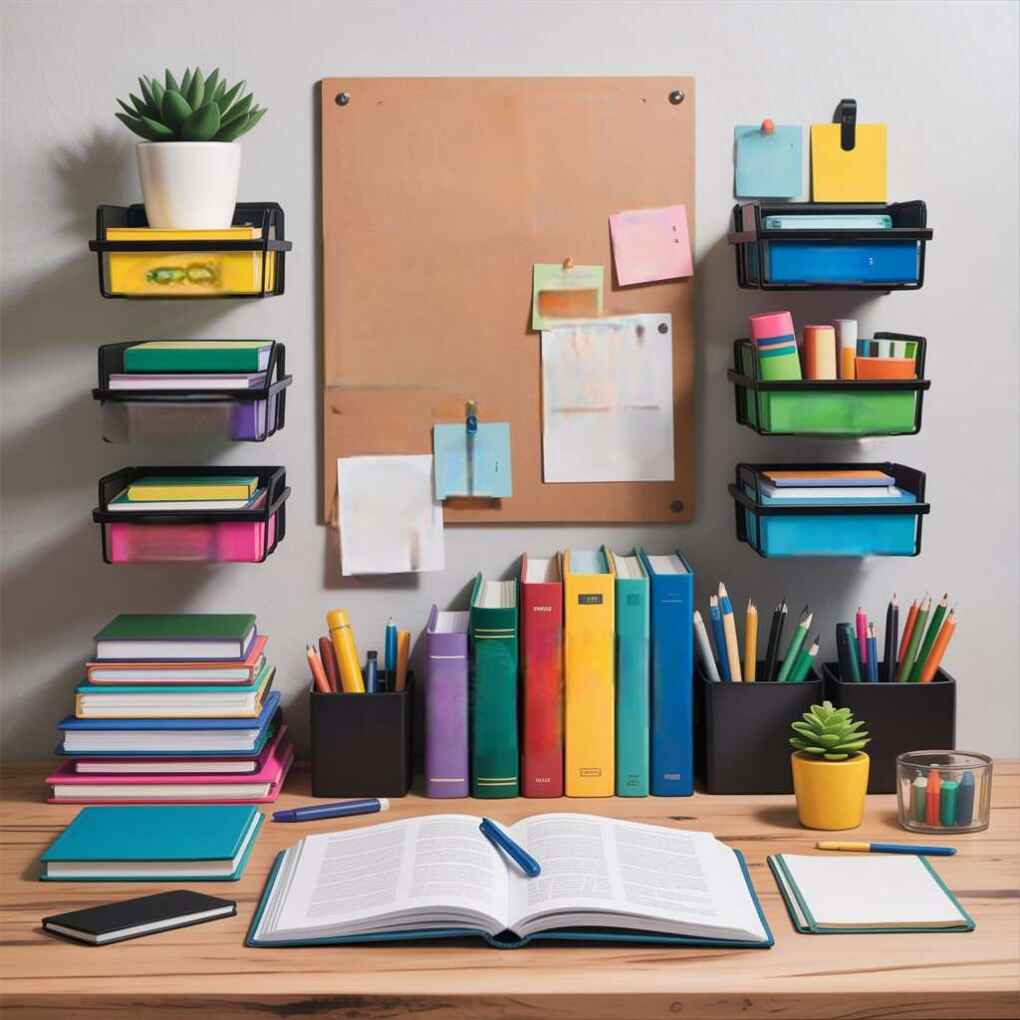
Students particularly benefit from clear zoning of their workspace. According to thespruce.com, “Students with dedicated, well-organized study spaces show 23% better retention of material than those who study in multi-purpose areas.” Use color-coding for different subjects and keep only current materials on your desk to avoid feeling overwhelmed by future assignments.
12. The Mobile Professional’s Compact Desk
- Invest in foldable or stackable storage solutions
- Use a lap desk with built-in organization
- Choose multi-functional accessories (pen that doubles as stylus)
- Keep a portable file system for documents
The Mobile Professional’s Compact Desk caters to those who work across multiple locations—co-working spaces, coffee shops, client offices. This setup prioritizes portability while maintaining essential organization and professionalism.
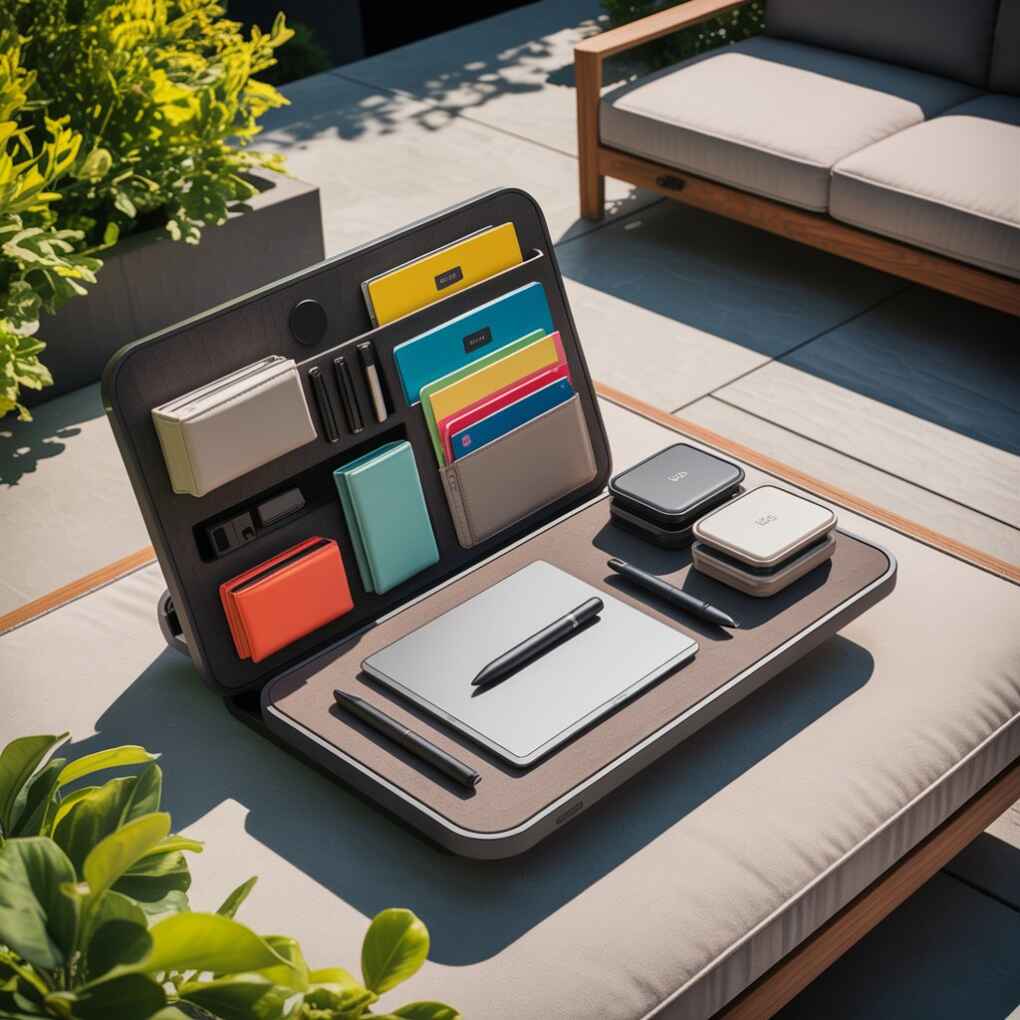
When space is limited, every item must earn its place. As localfurnitureoutlet.com advises, “The key to a mobile workspace is choosing accessories that serve multiple functions without adding bulk.” Use a single messenger bag or tote that contains all your desk essentials, organized into compartments for quick access.
13. The Wellness-Focused Workstation
- Add an ergonomic chair with lumbar support
- Include a standing desk converter
- Keep a water bottle visible and accessible
- Add a small diffuser with calming scents
The Wellness-Focused Workstation prioritizes physical and mental health as essential components of productivity. This setup recognizes that how we work directly impacts our well-being, and incorporates elements that support healthy work habits.
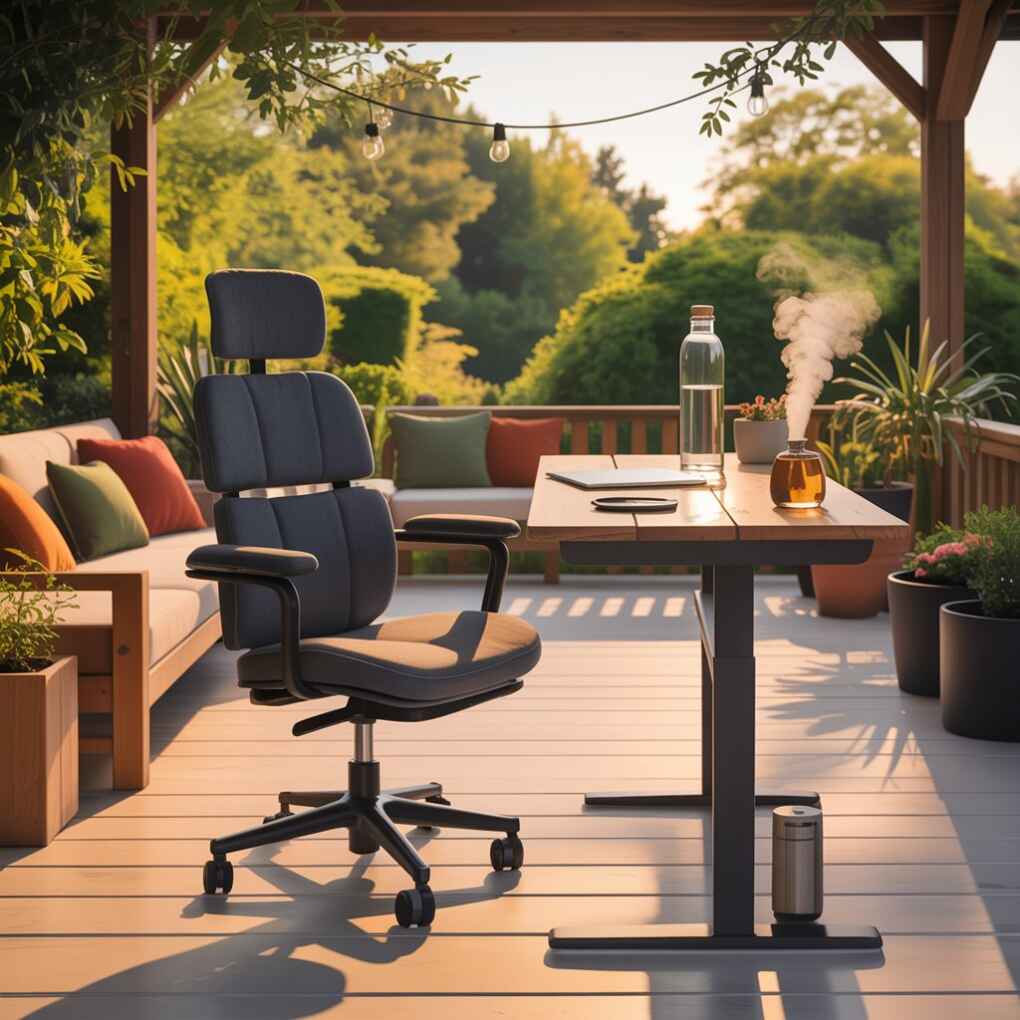
Ergonomics is just the beginning—wellness workspaces also address mental health through thoughtful design. According to creativebooster.net, “Workspaces designed with wellness in mind can reduce work-related injuries by 52% and improve overall job satisfaction.” Position frequently used items within easy reach to minimize strain, and take advantage of natural light whenever possible to regulate your circadian rhythm.
14. The Cultural Fusion Desk
- Incorporate meaningful artifacts from your heritage
- Use textiles that reflect cultural patterns
- Display books by authors from diverse backgrounds
- Add a small altar or meaningful symbols
The Cultural Fusion Desk celebrates diversity and personal heritage in the workspace. This approach transforms your desk from a generic work area into a reflection of your identity and values, creating deeper meaning in your daily work.
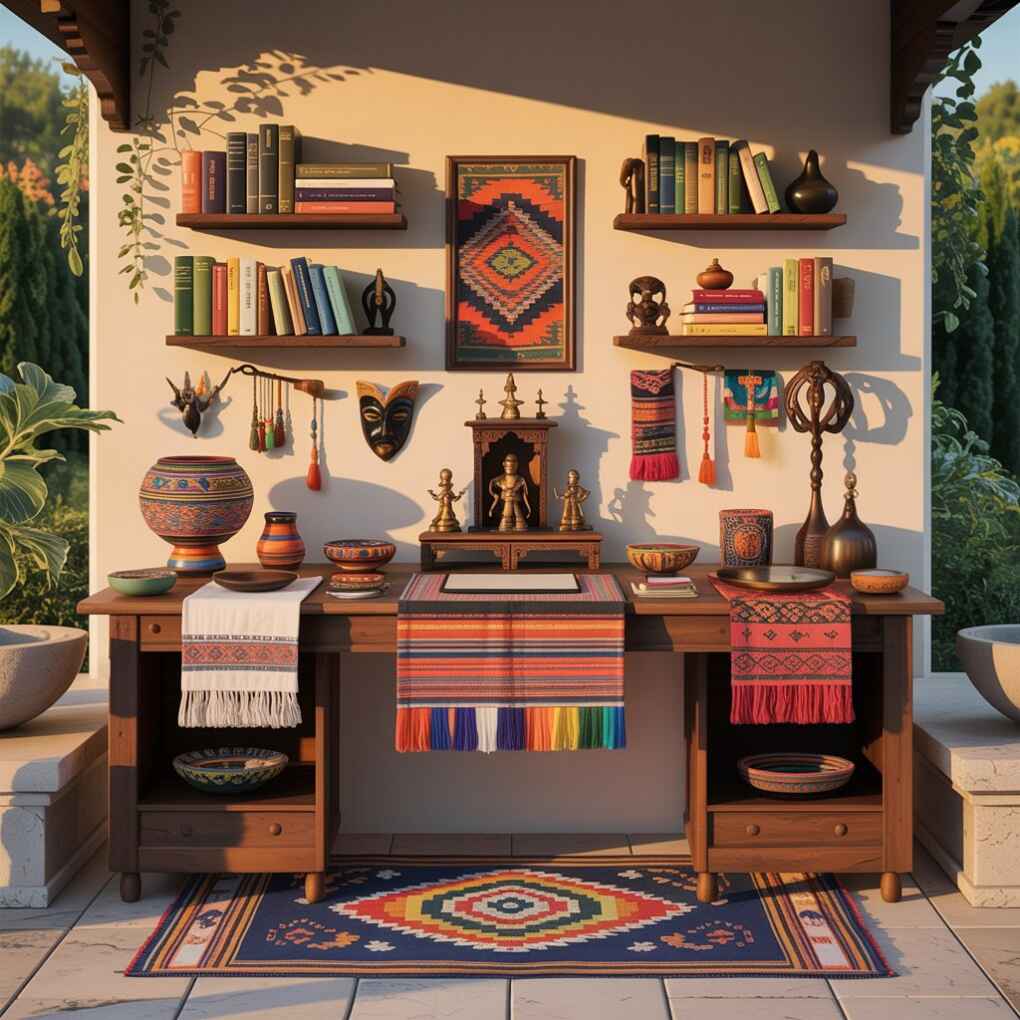
Cultural elements in the workspace can provide both comfort and conversation starters, especially in collaborative environments. As erincondren.com notes, “A workspace that reflects personal identity increases engagement and creates a stronger sense of belonging.” Be intentional about which cultural elements you include—choose items with personal significance rather than generic decorations.
15. The Seasonal Refresh Setup
- Change desk accessories with the seasons (pumpkins in fall, snowflakes in winter)
- Use a rotating display for seasonal art
- Adjust lighting color temperature for different seasons
- Incorporate seasonal plants (amaryllis in winter, tulips in spring)
The Seasonal Refresh Setup acknowledges that our needs and moods change throughout the year, and our workspace should evolve accordingly. This approach keeps your desk feeling fresh and relevant, preventing the staleness that comes from a static setup.
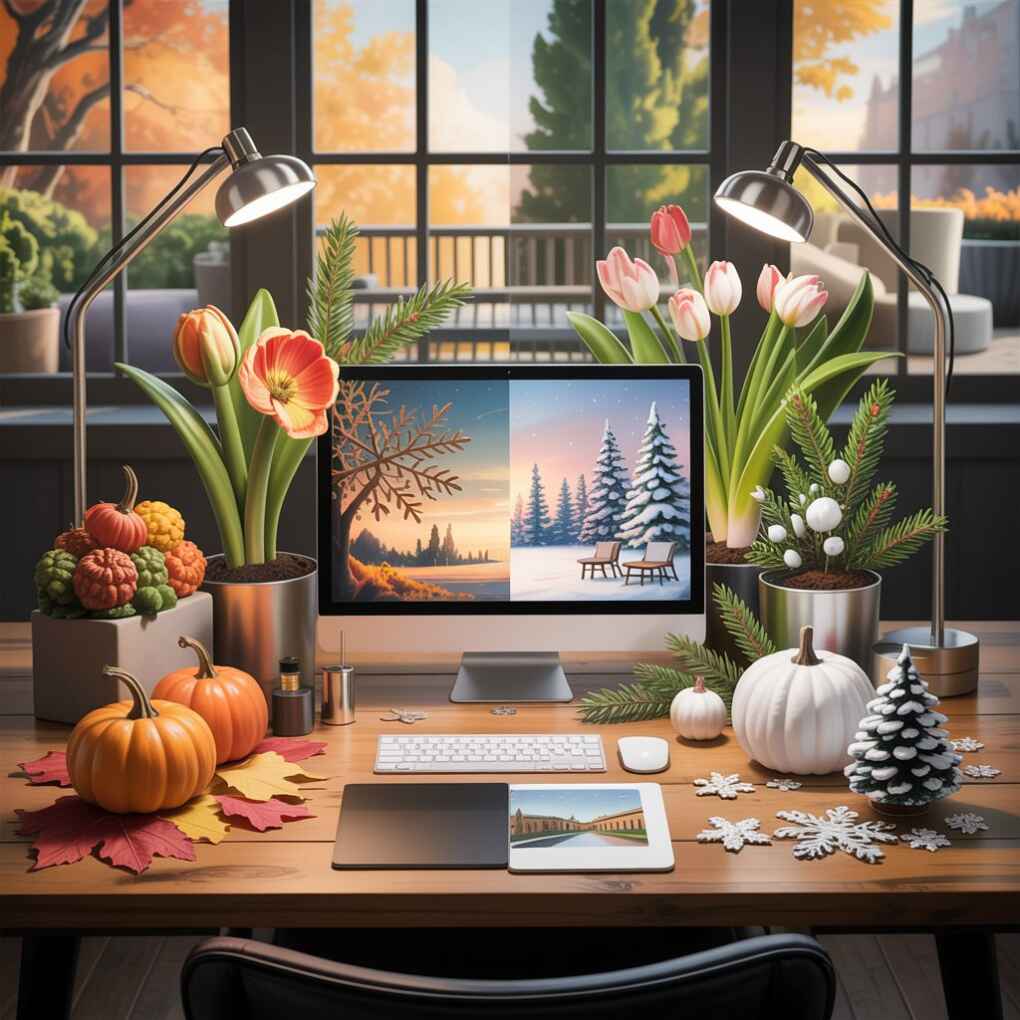
Seasonal changes in your workspace can improve mood and motivation by connecting you to the natural world. According to slouchonline.com, “Regularly changing desk decor can boost creativity by 12% by providing new visual stimuli.” Focus on subtle seasonal touches rather than complete overhauls—this makes refreshes manageable and sustainable.
Pro Tip: The Desk Audit System
Create a monthly “desk audit” where you evaluate your workspace through three lenses:
| Lens | Questions to Ask | Impact |
|---|---|---|
| Functionality | “What tasks take longer than they should?” | Identifies workflow bottlenecks |
| Aesthetics | “What do I see first when I sit down?” | Reveals visual distractions |
| Emotional Impact | “How do I feel when I look at my desk?” | Measures psychological effectiveness |
“Your desk should work for you, not the other way around. If you find yourself rearranging items daily or feeling frustrated by your workspace, it’s time for a redesign—not just a tidy-up.” – Interior Design Professional
Schedule 15 minutes each month to assess your desk through these lenses. Keep a notebook of observations and ideas for improvement. Remember that your workspace needs will evolve as your work changes, so embrace flexibility in your approach.
Conclusion
Your desk is more than just a place to work—it’s a reflection of your professional identity and a tool that either supports or hinders your success. By implementing these 15 desk decor ideas, you can create a workspace that enhances productivity, reduces stress, and brings more enjoyment to your daily work routine.
The perfect desk setup isn’t about following trends—it’s about creating a personalized space that works for your specific needs, work style, and personality. Start with one or two changes that address your most pressing workspace challenges, then build from there. Remember that even small adjustments can have significant impacts on your daily experience.
As you refresh your workspace, keep in mind that the most effective desks balance form and function, aesthetics and practicality. Your ideal workspace should feel uniquely yours while supporting the work you need to accomplish. Whether you’re working from home or in a corporate office, these desk decor ideas provide the foundation for creating a space where you can do your best work.
